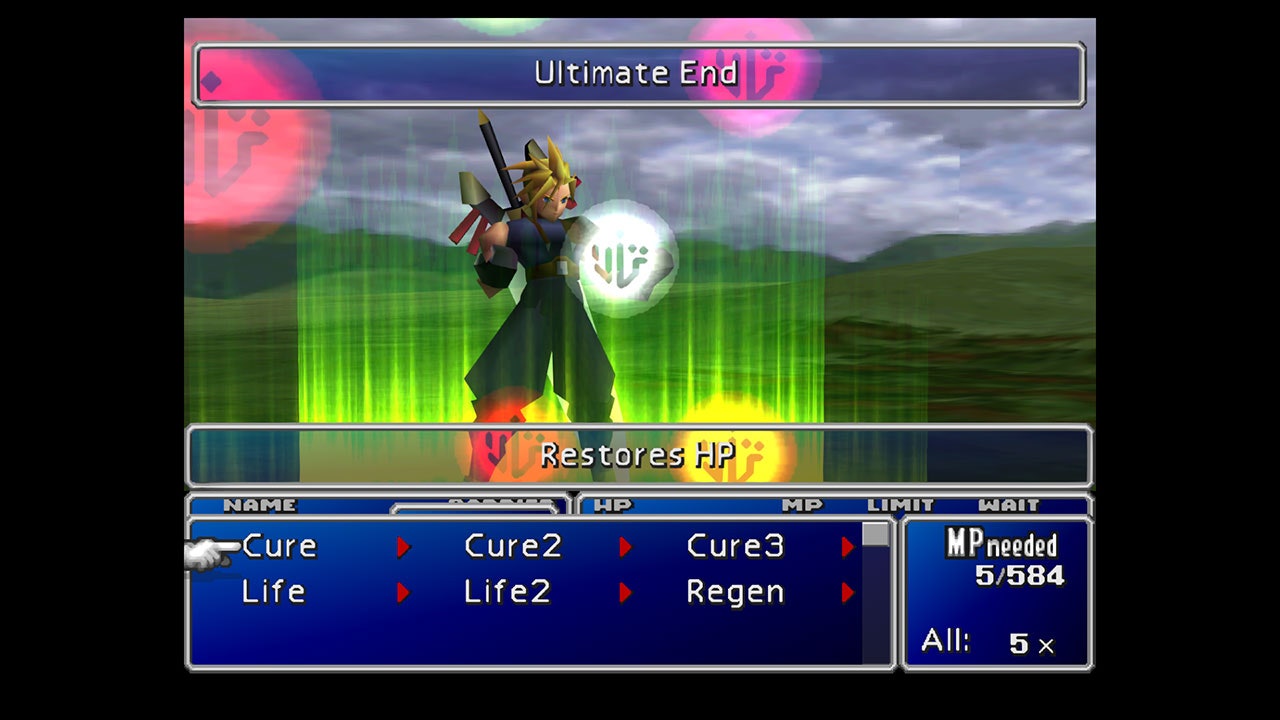Though the appearances and disappearances of the Whispers initially seems random, it eventually becomes clear that their purpose is to steer the story back onto the track whenever Remake threatens to break the continuity of the original game. They are basically the in-game avatars of a very vocal subset of weird nerds on the internet who insist that they—and they alone—should be the final word on where this story can go.
The game is ultimately about breaking that story; after a series of events too convoluted to explain here, Remake ends by implying that Final Fantasy VII’s characters have broken out of the original story’s template to forge a new trail in an uncertain future. For the first time in decades, it feels like Final Fantasy VII’s story could actually go anywhere.
Naoki Hamaguchi grew up playing Final Fantasy and loved it so much that he eventually decided to pursue a career in video games. “As the series progressed from V, VI, and VII, I felt the expressions within the games evolving, and I remember really sensing the promising future of the game industry,” he tells me. “I think it was around this time that I started to look up to game creators.”
That worked out pretty well for Hamaguchi—after joining Square Enix and working on 2006’s Final Fantasy XII, he worked his way up the company’s ranks and ended up codirecting Final Fantasy VII Remake with series veteran Tetsuya Nomura. As the sole director on Rebirth, he was tasked with remaking the second act of Final Fantasy VII’s original story, modernizing it while painstakingly aiming to retain what he, and other fans, loved the first time around. “In Japan, there is a word called ‘kishōtenketsu,’ which is a four-act structure common in Japanese storytelling,” he says. “I try to structure both humor and seriousness as a kind of inflection throughout the game.” In practice, that means Rebirth squeezes in playful detours—a ride on a dolphin here, a date on a Ferris wheel there—in what turns out to be a pretty sprawling game.
But the team behind Rebirth never hid where this chapter of the story would climax: That iconic death scene—which, in this new continuity, could either double down on the tragedy of Aerith’s unavoidable death or set the stage for a radically different third act when the third and final chapter of the Final Fantasy VII Remake project finally arrives.
Hamaguchi, too, was troubled by Aerith’s death as a teenager. “The theme of the game dealt with ‘life and death,’ and it expressed a deep worldview that was quite rare in video games at the time,” he says. “I found myself very much fascinated by the heart-wrenching storyline. As a child, I always wondered if there was a way to change this destiny.”
It must have been daunting, after so much time, to have the power to actually make that call. I’m not going to spoil what happens with Aerith in Rebirth; unlike the original game, that statute of limitations won’t expire anytime soon. But Rebirth’s willingness to revisit that question is radical enough. It’s a good test case for what gaming’s postmodernist era might look like: a video game that’s ultimately about the tension between honoring and challenging its own history.

